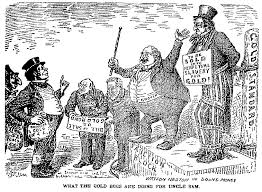By the mid-20th century, silver’s role in the U.S. monetary system was coming to an end, marking a significant shift in its status from a monetary metal to a commodity. While silver had historically been a foundation of U.S. currency, two key events finalized its removal: the Silver Purchase Act of 1934, which dramatically altered U.S. government silver policy, and the 1965 decision to eliminate silver from circulating coins. These actions reflected the broader global transition away from silver-backed money, as economies embraced fiat currency and metal-based monetary systems disappeared.

1. The Silver Purchase Act of 1934: A Shift in U.S. Silver Policy
- The Great Depression and Government Intervention
- During the Great Depression, the U.S. government sought ways to stabilize the economy and support the struggling mining industry.
- Silver prices had declined sharply, causing hardship for Western silver miners and economies reliant on silver-backed currency (such as China).
- The Silver Purchase Act and Government Hoarding
- The Silver Purchase Act of 1934 authorized the U.S. Treasury to purchase large amounts of silver to support prices.
- The U.S. stockpiled silver reserves, driving up its value artificially.
- This led to global consequences, particularly for China, which was still on the silver standard at the time—rising silver prices forced China to abandon silver-backed currency in 1935.
- Silver Certificates and Monetary Policy
- The Act also allowed for the issuance of silver certificates, which were redeemable for silver held by the U.S. Treasury.
- While these certificates circulated as money, they were ultimately phased out in 1964, further removing silver’s role in U.S. currency.
2. The Final Removal of Silver from U.S. Coins (1965)
- The Rising Price of Silver
- By the early 1960s, demand for silver in industry and investment was rising, while U.S. coin production continued consuming large amounts of the metal.
- The intrinsic value of silver coins began exceeding their face value, leading to hoarding and melting of silver coins by the public.
- The Coinage Act of 1965: The End of Silver Coins
- To prevent a coin shortage and protect monetary stability, President Lyndon B. Johnson signed the Coinage Act of 1965, which:
- Eliminated silver from dimes and quarters, replacing them with copper-nickel alloys.
- Reduced the silver content of half dollars from 90% to 40%, before eliminating it entirely in 1971.
- To prevent a coin shortage and protect monetary stability, President Lyndon B. Johnson signed the Coinage Act of 1965, which:
- The Aftermath: Silver Becomes a Commodity, Not Money
- After 1965, silver was no longer used in everyday U.S. currency, further cementing its role as a commodity rather than legal tender.
- Silver coins became collectible items, with bullion coins such as the American Silver Eagle (introduced in 1986) appealing to investors rather than serving as currency.
3. The Broader Global Trend: The End of Silver Coinage Worldwide
- Other nations followed the U.S. in eliminating silver from coins, as silver became too valuable for circulation:
- Canada removed silver from its coins in 1968.
- The UK eliminated silver content from its currency in 1947.
- France, Germany, and other European nations phased out silver coinage in the 1970s.
- By the late 20th century, no major nation used silver in circulating currency, marking the definitive end of silver’s role as money.
Conclusion: The Transition of Silver from Currency to Commodity
The Silver Purchase Act of 1934 and the removal of silver from U.S. coins in 1965 were pivotal moments in silver’s transition from a monetary metal to a commodity. These actions, along with similar trends globally, finalized silver’s departure from the financial system. No longer a foundation of currency, silver’s value was now driven by industrial demand, investment speculation, and technological applications rather than monetary policy.
